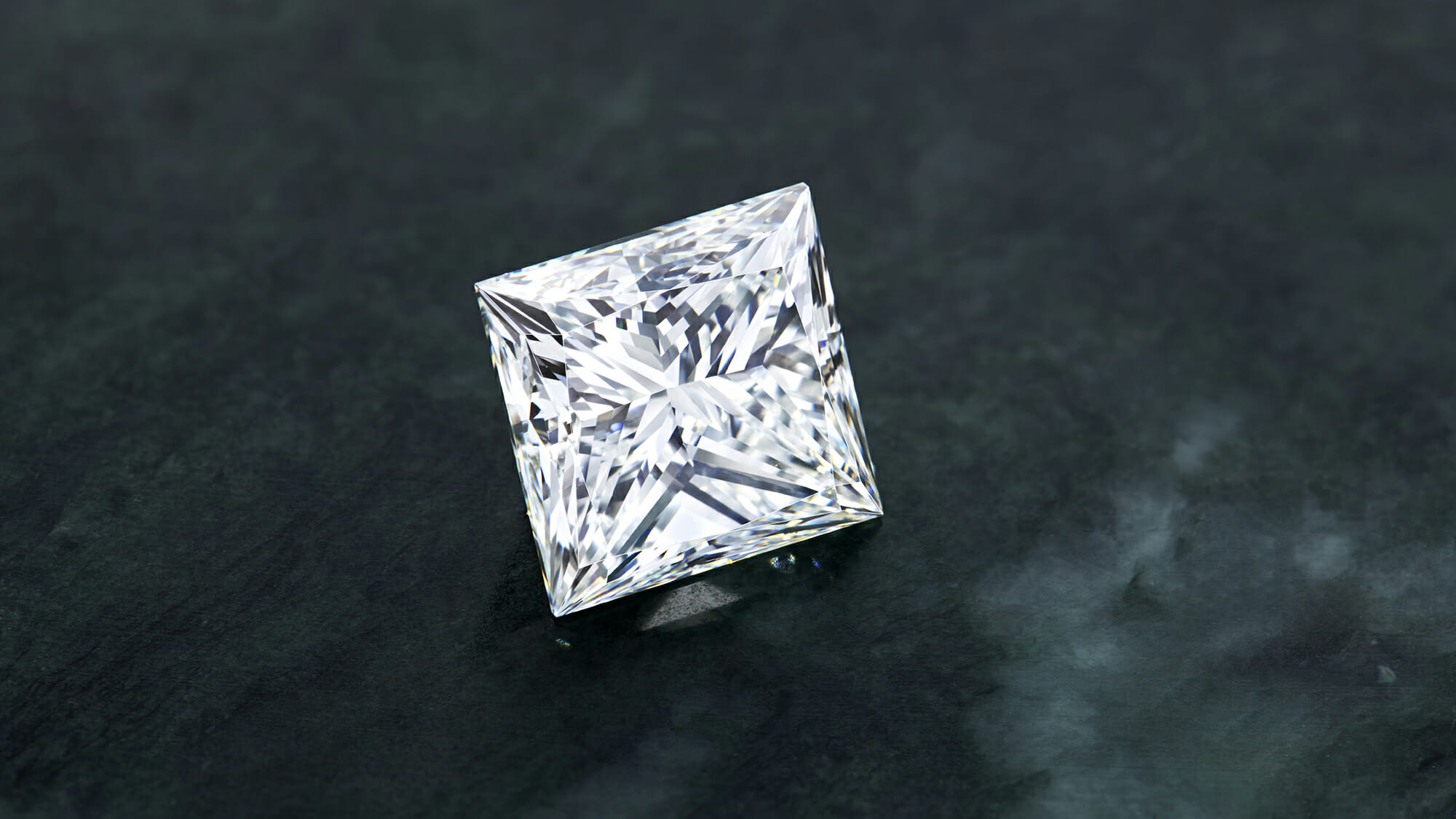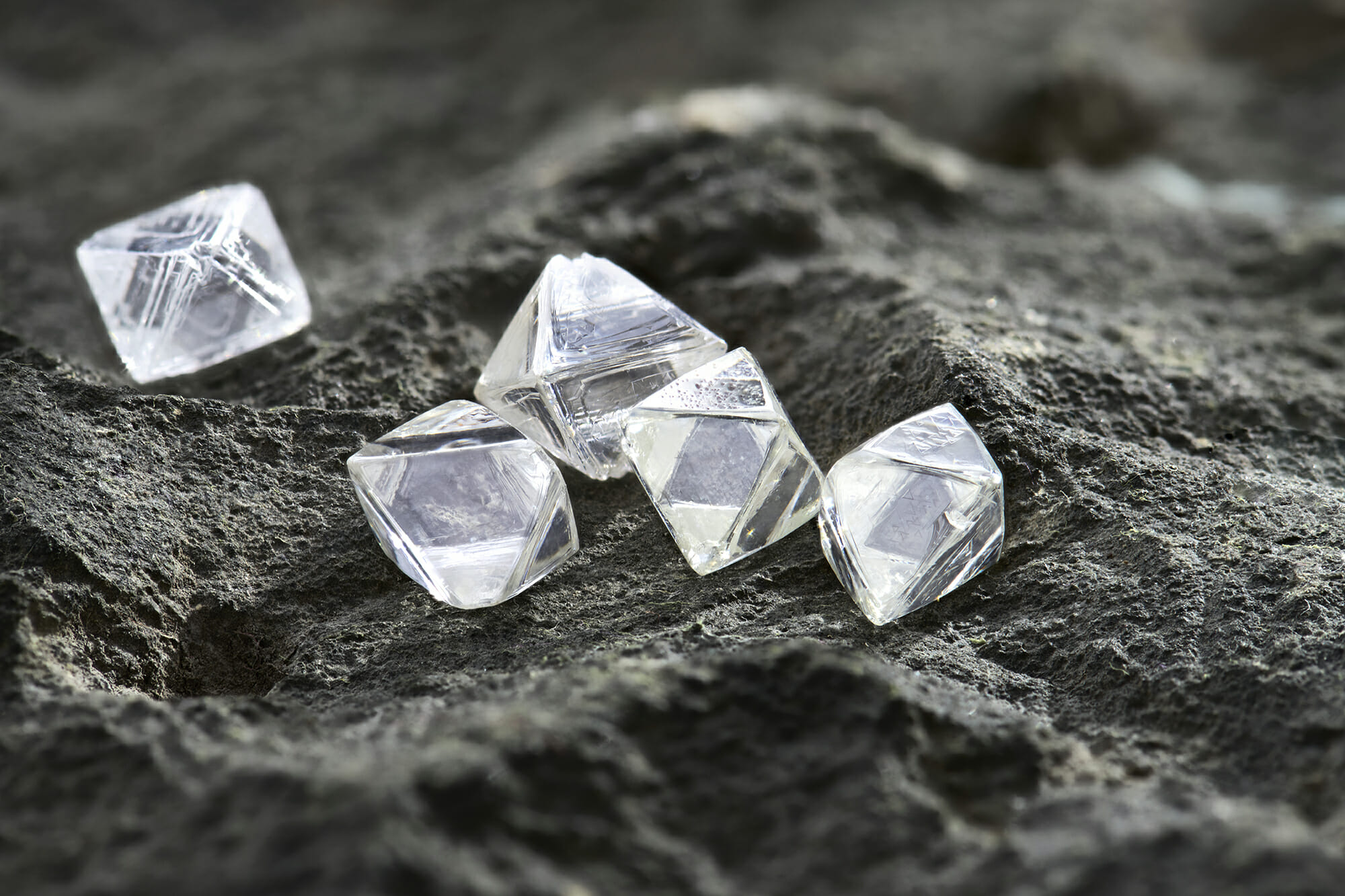Crowning of a Princess
Have you met the royal breakout star of All That Glitters? Meet the princess cut diamond…

All diamonds have tales to tell. Diamonds which had famous owners and stories about perilous ocean voyages. Diamonds which were the bounty of wars and diamonds which won the hearts of princesses. However some princesses have yet to find their prince, and some diamonds are still waiting to be made famous.
The ethically sourced diamonds featured in All That Glitters, that originate from Ekati in the Northwest Territories of Canada and run by the Arctic Canadian Diamond Company, are princess-cut diamonds, the second most popular diamond-cut for an engagement ring across the pond in America; second only to the round brilliant-cut. Despite this prevalence, not as much is known about this relative newcomer to the diamond world, and the many benefits this particular cut of diamond can offer.
Diamonds formed in the earth billions of years ago, yet for centuries diamonds were not the most preferred gem. Diamonds are the hardest stone, and they were generally only seen in their rough shape which didn’t display as much fire and brilliance as cut gems. Prior to the mid-1300s diamonds were commonly considered uncuttable. They are the hardest material on the planet so how could man cut such an extraordinary object of nature? It turns out that a diamond will cut a diamond, and for the last 700 years lapidaries (gemstone cutters) have been finessing the art of diamond cutting.
The cutting of diamonds has evolved tremendously in the last 100 years. The real turning point came in 1919 when a young man named Marcel Tolkowsky discovered the key to the “ideal” diamond cut as part of his doctoral thesis. What made a diamond cut “ideal” was the precise placement, amount and size of the different facets on a diamond. These facets meant that the maximum amount of light was reflected and refracted back to the viewer of the diamond. His creation is now referred to as the modern brilliant-cut diamond, the most popular and expensive diamond cut available on the market.
Thanks to Tolkowsky’s discovery of maximizing light return, diamonds have become more and more sparkly over the decades and diamond cutters have become more creative in developing new diamond shapes. The principals of Tolkowsky’s findings still dominate the way diamonds are cut today. His arrangement of 57 facets has been extrapolated to make different shapes: oval, marquise and pear-cuts. These are generally referred to as “fancy-cuts”. Of the mainstream fancy diamond cuts, the youngest of the group is the princess-cut diamond.
The square diamond known as a princess-cut is a newcomer to the diamond market, indeed it may be younger than many of the men and women who wear them! The name princess-cut was once used to describe a very different diamond. In 1961, a London diamond cutter named Arpad Nagy created a new style which he called the “princess-cut”. However the cut didn’t catch on commercially despite the regality of its name, and today it’s referred to as the profile-cut instead.
Although Nagy came up with the name, the shape is really down to three men working in Israel. Ygal Perlman, Betzalel Ambar, and Israel Itzkowitz spent years researching the optical quality of different diamond cuts. Their first offering in the early 1970s was the Quadrillion cut which had 49 facets, less than the 57 of a brilliant-cut. Although they trademarked the name, the cut wasn’t patented because they didn’t want to publish their “blueprint”. By 1979 they believed they had perfected their diamond cut and named it the princess-cut.
Each rough diamond speaks to the cutter. The diamond crystal itself determines what type of polished diamond it will become. One of the natural shapes of a diamond crystal is an octahedron; a form with eight equal triangular sides which looks like two pyramids joined at the base. London based jeweller Roxanne Rajcoomar-Hadden was the youngest ever rough diamond grader for De Beers Group in London, so she knows a thing or two about diamond cutting. ‘The sharper and more defined the Octahedron, the more it would lean towards a princess cut yield. Because of its natural organic square-like shape a gem cutter just needs to split the Octahedron in half to create two pyramid shapes’.

Frequently credited for being the preferred cut amongst modern, innovative buyers. Its clean lines and geometric form connect with men and women seeking a clean and fresh profile. Roxanne who now specialises in bespoke jewellery creations with her clients says, ‘The great thing about princess cuts is they often appear larger on the surface than their carat weight – which allows you to attain a larger looking stone for less than you would a round brilliant for example’.
The princess-cut holds one final secret which makes it even more fascinating. As a society, we are rightly becoming more and more aware of the waste created as a biproduct of manufacturing. Diamonds are no exception to this rule and princess-cut diamonds come out as one of the heroes of the array. When a diamond cutter transforms a rough diamond crystal into a beautiful polished diamond, half of the original diamond crystal can be lost in the polishing process. With a well-formed octahedron shaped rough diamond, resembling two pyramids joined together, a princess-cut diamond can be cut with less weight loss. ‘The relative simplicity of the process of cutting a princess-cut means less time for the gem cutter, and much less waste’ – says Roxanne.
For those looking to make a diamond their very own, whether it be as a bride or as an investment in one’s own collection, a natural princess-cut diamond invites you to join its royal fold.
To see more of our exclusive behind the scenes coverage from All That Glitters, visit www.naturaldiamonds.com/AllThatGlitters
